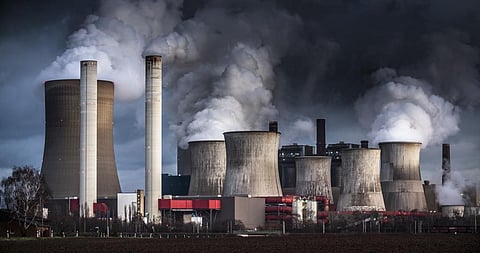

The last eight years, 2015-2022, have consecutively been the warmest years on record globally, according to the recent State of the Global Climate 2022 report by the World Meteorological Organization (WMO) released in Geneva.
Incidentally, the Paris Agreement that serves as the fulcrum of ongoing global negotiation on climate change — signed by about 200 countries agreeing to cut emissions — was inked in 2015.
The situation could have been far worse if the La Nina weather event had not occurred in the past three years, which has a cooling effect on the weather system, the report pointed out.
Not much has happened since the 2015 Paris Agreement, said K J Ramesh, former director general of IMD told this reporter on April 30, 2023.
“Even the recent Intergovernmental Panel on Climate Change’s sixth assessment report report suggested that neither nationally determined contributions (NDC) nor the disaster risk reduction and climate risk management plans are in place to combat climate-induced extreme weather phenomena,” said Ramesh.
Globally updated NDCs to meet the 2 degrees Celsius target, forget the 1.5°C one, are yet not in front of us, Ramesh further observed, adding, “There is an urgent need to evolve mechanisms to address climate action deficit at national and sub-national scale”.
“It is evident that the Paris Agreement has not been able to equitably phase out fossil fuels predominantly responsible for the climate crisis,” observed Harjeet Singh, head of the global political strategy of Climate Action Network International.
We need a new global framework in the form of a fossil fuel treaty to complement the 2015 agreement. This can drive green transition through international cooperation, Singh said.
The outcomes of the latest WMO report vindicate what civil society has all along been complaining about, climate experts have pointed out. Most industrialised and emission-belching countries have not been following through on their commitments and carrying out their responsibilities.
The United Nations accepted the allegation. “We have the tools, the knowledge, and the solutions. But we must pick up the pace. We need accelerated climate action with deeper, faster emissions cuts to limit global temperature rise to 1.5°C,” observed UN Secretary-General António Guterres.
Guterres, in response to the report, supported the need to undertake massively scaled-up investments in adaptation and resilience, particularly for the most vulnerable countries and communities who have done the least to cause the crisis.
A series of climate records fell over in 2022, the report showed.
“The WMO annual report has once again brought focus on how climate change continued to increase its ambit in 2022, right from mountain peaks to ocean depths,” said WMO Secretary-General Petteri Tallas, during the release of the report.
Droughts, floods and heatwaves affected communities on every continent, including India, and cost many billions of dollars, he added. The secretary-general also admitted that almost a hundred countries do not have adequate weather services in place.
Tallas, however, pointed out that “collaboration amongst UN agencies has proven to be very effective in addressing humanitarian impacts induced by extreme weather and climate events, especially in reducing associated mortality and economic losses.”
The report also highlighted the combined impact of climatic drivers with pandemic pressure, as well as conflicts across the world.
“Rising undernourishment has been exacerbated by the compounded effects of hydrometeorological hazards and COVID-19, as well as of protracted conflicts and violence,” read the report.
“Throughout the year, hazardous climate and weather-related events drove new population displacement and worsened conditions for many of the 95 million people already living in displacement at the beginning of the year,” it further said.